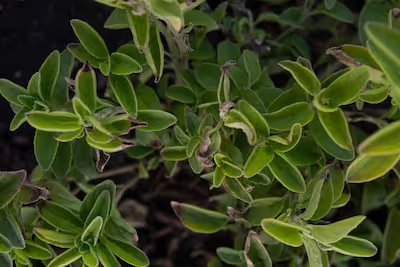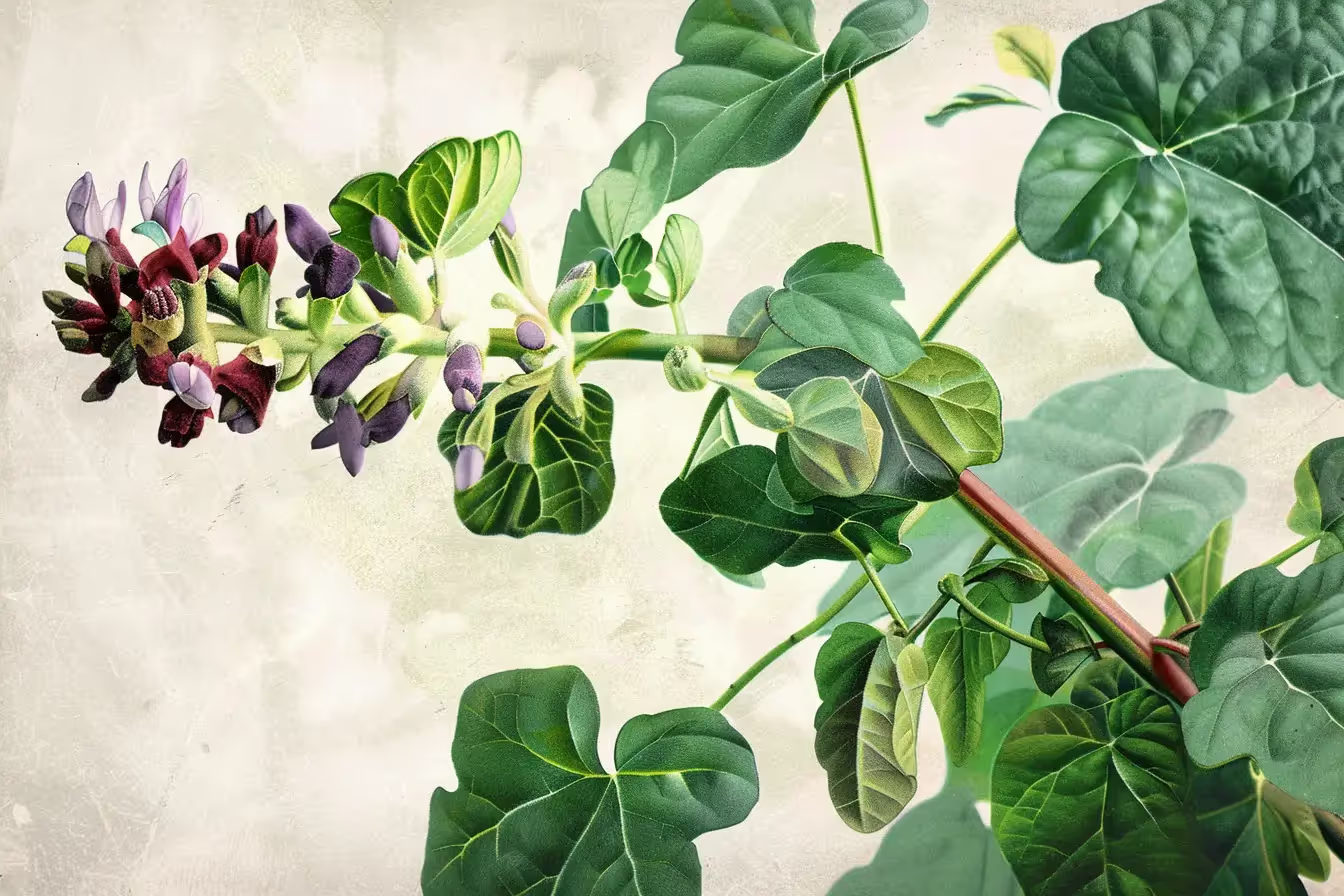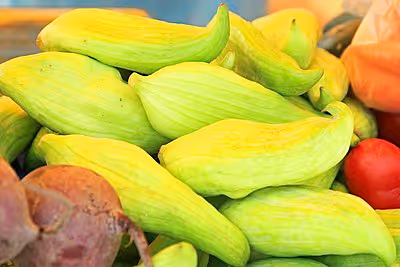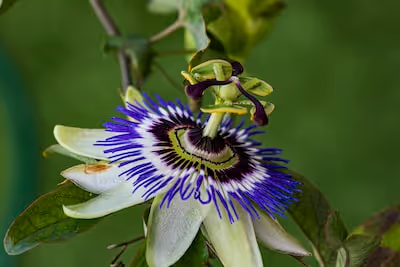Growing Marjoram: How to Cultivate a Fragrant Herb Garden

Growing Marjoram
Growing marjoram turns simple herb beds into aromatic havens. People savor marjoram's Mediterranean roots, mild oregano-like fragrance, and subtle citrus undertones. Plant in full sun, water sparingly, and prune lightly, and you'll master growing marjoram—an herb chefs quietly swear by but rarely brag about. Here's how to cultivate this understated flavor hero yourself.
Cheatsheet: Master Marjoram for Herb Gardens
🌱 Optimal Growing Conditions
- Sunlight: 6+ hrs direct
- Soil: Well-drained, sandy or loamy; pH 6.5–7.5
- Temp: 60–75°F (16–24°C); frost-free
- Spacing: 10–12 in (25–30 cm) apart
🛠️ Tools and Products You'll Need
- Hand trowel
- Watering can or drip hose
- Organic compost
- Pots (12 in / 30 cm+), for patio growing
- Mulch
- Marjoram seeds or starter plants
- Sharp scissors for harvest
✋ Easy Steps: How to Grow (Outdoors or Indoors)
- Prep soil: Loosen top 6 in (15 cm), mix compost.
- Plant: Sow seed 1/8 in (3 mm) deep or set starter plants.
- Water: Keep evenly moist; avoid soggy roots.
- Thin: Space 10–12 in (25–30 cm) when seedlings 2 in (5 cm) tall.
- Mulch: Conserve moisture, prevent weeds.
- Harvest: Snip stems when 4+ in (10 cm); pick before flowering for strongest flavor.
🌸 Stats & Benefits
- Germination: 7–14 days
- Time to harvest: 60 days from sowing
- Rich in: Vitamin K, antioxidants
- Patch of 3–5 plants: Enough for steady culinary use
- Marjoram oil aids digestion & immunity
🍃 Cooking & Storage Tips
- Dry leaves in shade to retain flavor
- Freeze chopped sprigs for winter use
- Fresh, sweet aroma complements meat, veg, soup, and oil infusions
-
Growing Marjoram: site, light, and climate
I grow Growing Marjoram in the hottest, brightest spot I own, because this herb packs the most fragrance under full sun and lean conditions.
Plan for 6 to 8 hours of direct sun, and expect peak flavor in dry, warm air at 70 to 85 F, 21 to 29 C.
Royal Horticultural Society: “Plant marjoram in full sun in a fertile, well-drained soil.”
Sweet marjoram, Origanum majorana, behaves as a tender perennial outdoors in USDA Zones 9 to 10, and I treat it as an annual elsewhere.
Frost ends the party fast, so I wait until nights stay above 50 F, 10 C, before planting out.
Soil physics, drainage, and pH
I aim for a sand-leaning loam with sharp drainage, then blend 20 to 30 percent horticultural grit or perlite to keep roots airy.
Target pH 6.5 to 7.5, and mix in a small dose of finished compost, about a half-inch, 1.25 cm, across the bed.
Marjoram hates wet feet, so I build a berm or use raised beds where clay dominates.
Sowing and propagation
I start seeds indoors 6 to 8 weeks before my last frost, and I surface-sow because the tiny seed needs light to germinate.
Bottom heat speeds things up at 68 to 72 F, 20 to 22 C, and I keep the humidity dome on until I see green.
University Extension guidance: “Marjoram seed germinates in 7 to 14 days at 65 to 70 F, 18 to 21 C, and benefits from light exposure.”
I prick out seedlings once they sport two true leaves, then grow them on under bright LEDs for 14 hours a day.
Cuttings root fast too, 3 to 4 inch tips, 7 to 10 cm, stuck in a perlite and peat mix with gentle bottom heat.
Spacing, transplanting, and air
I set plants 8 to 12 inches apart, 20 to 30 cm, which keeps airflow high and mildew away.
Harden off a full week, then transplant into warm soil above 60 F, 15.5 C, to dodge sulking.
Containers vs beds
In pots, marjoram shines, so I use a 10 to 12 inch, 25 to 30 cm, terra cotta container per plant with a high-drain mix.
I blend 2 parts quality potting mix with 1 part pumice or perlite, then mulch lightly with gravel to keep stems dry.
Water, mulch, and nutrition
I water deep and infrequent, letting the top inch, 2.5 cm, go dry before the next drink, since mild drought concentrates oils.
Too much nitrogen blows up leaves yet waters down flavor, so I feed at a half-rate once a month or use a low-dose slow release at planting.
Extension note: “High nitrogen fertilization can reduce essential oil concentration in culinary herbs.”
In the ground, I skip organic mulches that hold moisture against stems and use mineral mulch, pea gravel, for cleanliness and heat.
Pruning, pinching, and harvest timing
I pinch tips early and often to build a dome of shoots, which multiplies harvests and keeps plants compact.
Flavor peaks right before flowering, so I cut stems in the cool morning and leave at least a third of the plant to rebound.
Scissors beat tearing, and I avoid cutting into woody tissue to keep regrowth snappy.
Overwintering and year two
Where frost hits, I pot a plant in late summer, then overwinter on a bright windowsill that stays above 60 F, 15.5 C.
Cuttings taken in August root like a charm and carry the genetics of your tastiest plant into spring.
Pests, disease, and IPM notes
In my gardens, issues arrive with overwatering, not bugs, so good drainage solves most headaches.
Watch for aphids and spider mites in dry indoor air, wash them off with a firm spray, and escalate with insecticidal soap only if needed.
Root rot and crown rot follow soggy soil, so I lift plants if drainage slows and reset them higher on a grit-rich mound.
Missouri Botanical Garden: “Provide excellent drainage to prevent crown and root rot in marjoram.”
Flavor science and kitchen payoff
Marjoram leans sweet and floral, with terpinen-4-ol and sabinene hydrate driving that gentle perfume compared to oregano’s punchier carvacrol.
I use it where fat needs lift, roast chicken, grilled zucchini, white bean salads, and the leaves keep their nuance if added late.
Top picks, lookalikes, and smart swaps
- Sweet marjoram, Origanum majorana, classic soft, sweet profile, best for fresh use.
- Pot marjoram, Origanum onites, slightly sharper, handles heat well, good in mixed borders.
- Hardy marjoram, Origanum × majoricum, a marjoram x oregano hybrid, survives colder zones and tastes balanced.
- Greek oregano, Origanum vulgare subsp. hirtum, a stronger stand-in for high-heat cooking.
- Za’atar types, Origanum syriacum, bolder, earthy, terrific in spice blends and flatbreads.
Commercial picks and gear I actually use
- Seeds vs starts: I buy fresh seed every two years for vigor, and I grab nursery starts in late spring to hedge my bets.
- Lights for seedlings: full-spectrum LEDs at 4000 to 6500 K, set 6 to 8 inches, 15 to 20 cm, above tops for 14 to 16 hours daily.
- Containers: unglazed clay, 10 to 12 inch, 25 to 30 cm, with three drainage holes and a mineral mulch cap.
- Potting mix: peat or coir base with bark fines plus 30 percent perlite or pumice for fast drainage.
- Fertilizer: balanced organic granular at half label rate, or a mild fish and seaweed feed at 1 to 2 percent every 3 to 4 weeks.
- Drying kit: mesh herb rack or a dehydrator set to 95 to 105 F, 35 to 40 C, to preserve volatile oils.
- Shears: small bypass snips for clean pinches and quick harvests.
Drying, freezing, and storage
For drying, I cut 6 inch stems, 15 cm, bundle loosely, and air dry in a dark, breezy spot until leaves crumble with a snap.
For frozen pesto cubes, I blitz leaves with olive oil and lemon, then freeze in trays at 1 tablespoon portions for instant pan sauce magic.
Store dried marjoram in airtight glass away from light, and refresh the jar every 6 to 12 months for best aroma.
Companions and design tricks
I tuck marjoram beside peppers and tomatoes to lure hoverflies, and the low mound edges paths neatly.
It pairs with thyme, rosemary, and sage in a Mediterranean bed that craves heat and shrugs off brief dry spells.
Yield benchmarks
From a healthy plant, I pull a small handful every week in high summer, and two heavy cuts for drying across the season.
Plants top out at 12 to 24 inches, 30 to 60 cm, and stay denser with consistent pinching.
Quick calendar
- Late winter: start seeds indoors, surface-sown under bright light at 68 to 72 F, 20 to 22 C.
- Spring: harden off, transplant after frost, and pinch early to branch.
- Summer: harvest weekly, water deep but spaced, and feed lightly.
- Late summer: take cuttings for overwintering and a fresh fall flush.
- Fall: dry or freeze surplus, and bring an elite plant indoors if frost looms.
Field notes from the heat
I once roasted a pot on a white stone patio, so I slid it into afternoon shade and swapped bark mulch for gravel, and the plant bounced back with insane perfume.
Lean soil, hot sun, and restraint with water build better marjoram than any fancy bottle ever did.
Credible voices I trust
- Royal Horticultural Society, cultural notes for Origanum species and kitchen herbs.
- University Extension publications on herb propagation, light requirements, and fertilization effects on essential oils.
- Missouri Botanical Garden plant finder profile for Origanum majorana.
- USDA Plant Hardiness Zone Map for perennial behavior by region.
Frequently Asked Questions About Growing Marjoram
What is the ideal environment for marjoram plants?
Marjoram thrives best in full sunlight with at least 6 hours daily. Plant it in a well-draining, sandy or loamy soil with a neutral to slightly alkaline pH between 6.5 to 7.5. Warm, mild climates with daytime temperatures between 65–75°F (18–24°C) support optimal growth.
How much water does marjoram require?
Water marjoram plants moderately but regularly, allowing the soil surface to become slightly dry between waterings. Typically, 1 inch (2.5 cm) of water per week suffices, increasing slightly in hotter or drier periods.
Can marjoram handle frost and colder climates?
As a tender perennial herb, marjoram is sensitive to frost and typically hardy in USDA zones 9–10. In colder regions with temperatures below 40°F (4.5°C), grow it annually or in pots indoors during winter months.
What's the best way to fertilize marjoram?
Use a balanced organic fertilizer, like compost or aged manure, lightly incorporated into the soil prior to planting. For container-grown plants, apply diluted liquid fertilizer once every 4–6 weeks during active growth periods.
When and how do I harvest marjoram correctly?
Harvesting marjoram leaves begins once the plant reaches approximately 4 inches (10 cm) tall. Snip stems just above a leaf node, encouraging new growth. Harvest frequently throughout the growing season before flowering occurs to ensure peak flavor.
Does marjoram require pruning or special care?
Regular pruning encourages dense, compact growth. Pinch back stems periodically to prevent woody, leggy growth. Additionally, remove flowering stems promptly to improve leaf production and maintain essential oils.
Are there common pests or diseases affecting marjoram?
Occasionally, marjoram can experience aphids, spider mites, or fungal diseases such as root rot. Prevent these by providing suitable drainage, spacing plants adequately, and maintaining proper airflow. Treat pests promptly with natural insecticidal soap or neem oil.
Growing Marjoram rewards with more than just fragrance—it’s about watching a compact herb thrive with minimal fuss. Give it good drainage, sun, and a little neglect, and it’ll pay you back with leaves that make fresh tomato salads, roast chicken, or a summer stew sing. Pinch it often, keep the flowers at bay for bushier growth, and don’t be shy about snipping what you need. If you’re building a herb patch with thyme, sage, or tarragon, marjoram fits right in—each herb brings something different to the table. Get the basics right, and you’ll have a fragrant, productive partner in the garden for seasons to come. In short: Full sun, light touch, regular harvest. Simple, honest, and worth it.
The Homesteader's Take on Growing Marjoram
Boost Pantry Flavor Year-round
Dry marjoram sprigs upside-down in bundles for 7–10 days; store dried leaves sealed in glass jars for potent flavor lasting up to 1 year.
Attract Essential Pollinators
Marjoram flowers draw beneficial pollinators like bees and butterflies, increasing yields of nearby fruits and vegetables by up to 30%.
Companion Planting for Pest Control
- Brassicas (cabbage, kale): Marjoram deters cabbage moths.
- Tomatoes and peppers: Repels aphids, promoting healthier plants.
- Beans and peas: Attracts ladybugs that feed on harmful insects.
Medicinal Marjoram for Self-Sufficient Health
Brew marjoram tea (1 teaspoon dried leaves per cup hot water, steep 5 minutes) for mild calming and digestive support; oil infusions soothe sore muscles when massaged into skin.
Sustainable Seed Saving
Allow marjoram flowers to mature fully; harvest brown seed heads, dry thoroughly (1–2 weeks), and store in airtight containers in cool, dark conditions for viability up to 4 years.
Find out which plants will thrive in your garden!
Answer a few fun questions and get custom plant recommendations perfect for your space. Let’s grow something amazing together!

start your season





